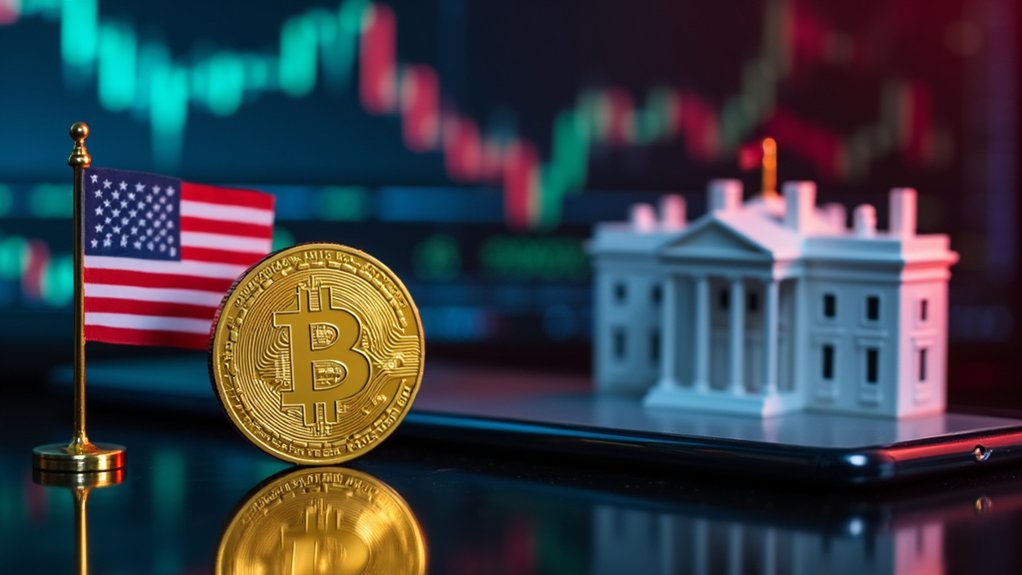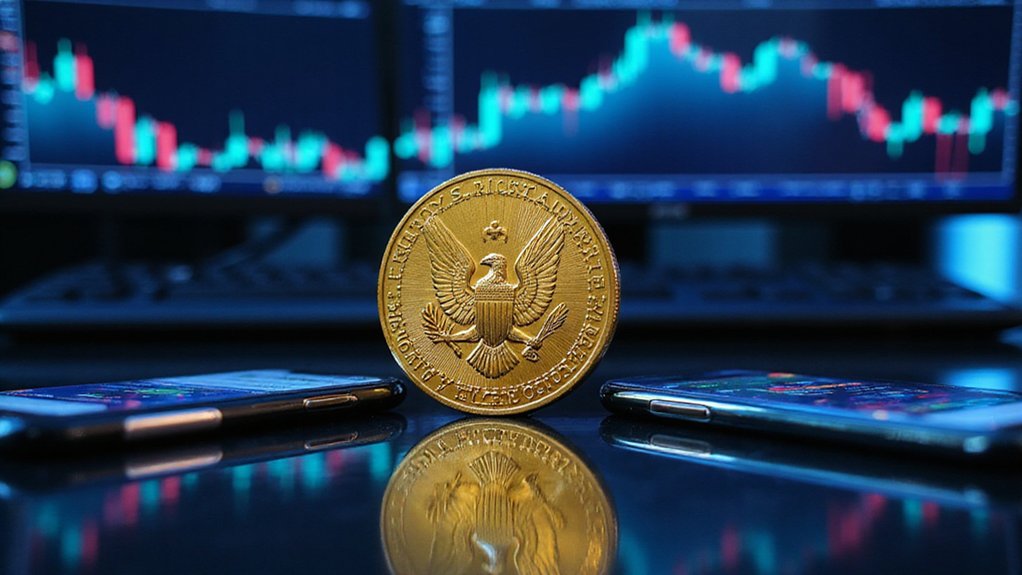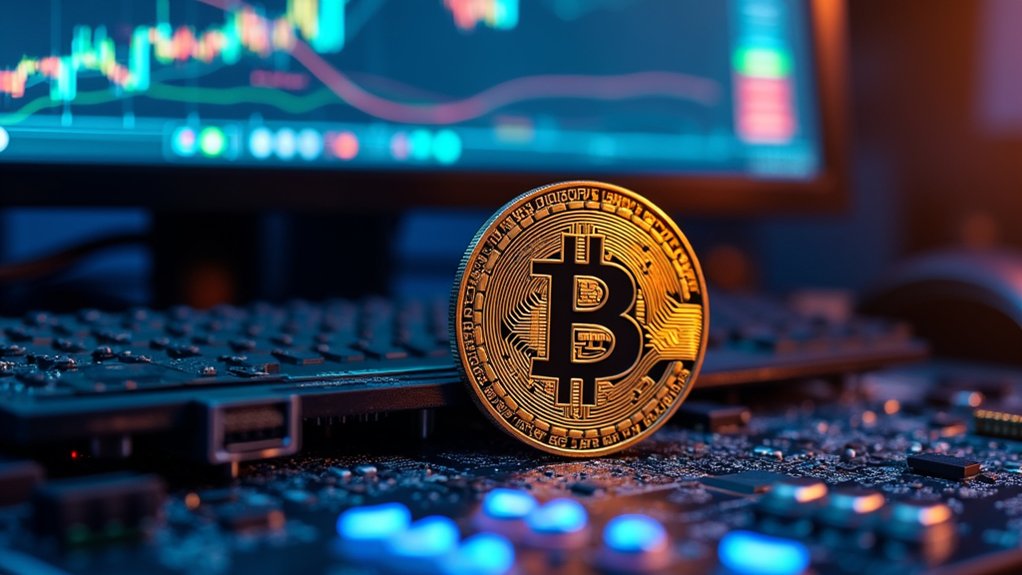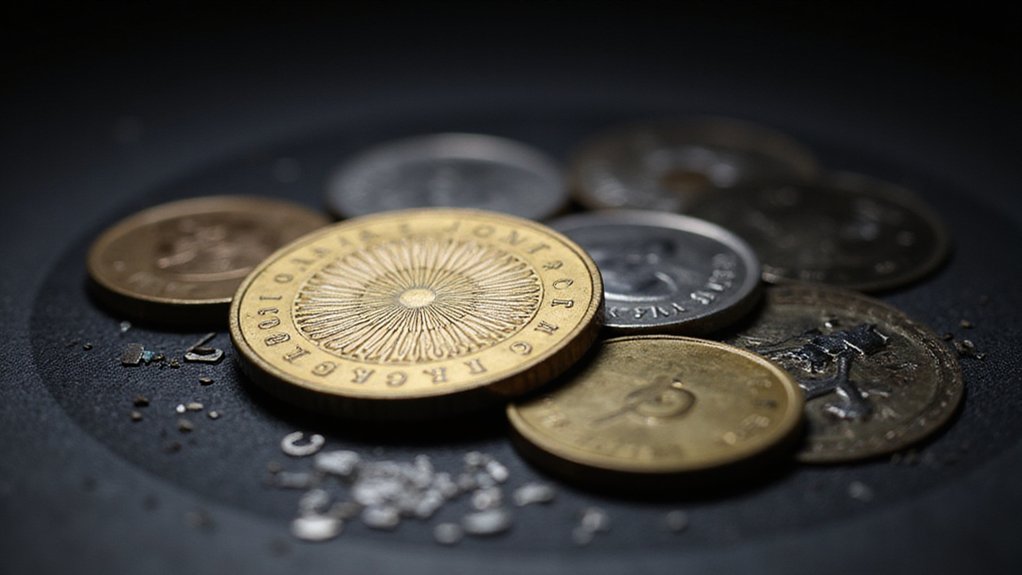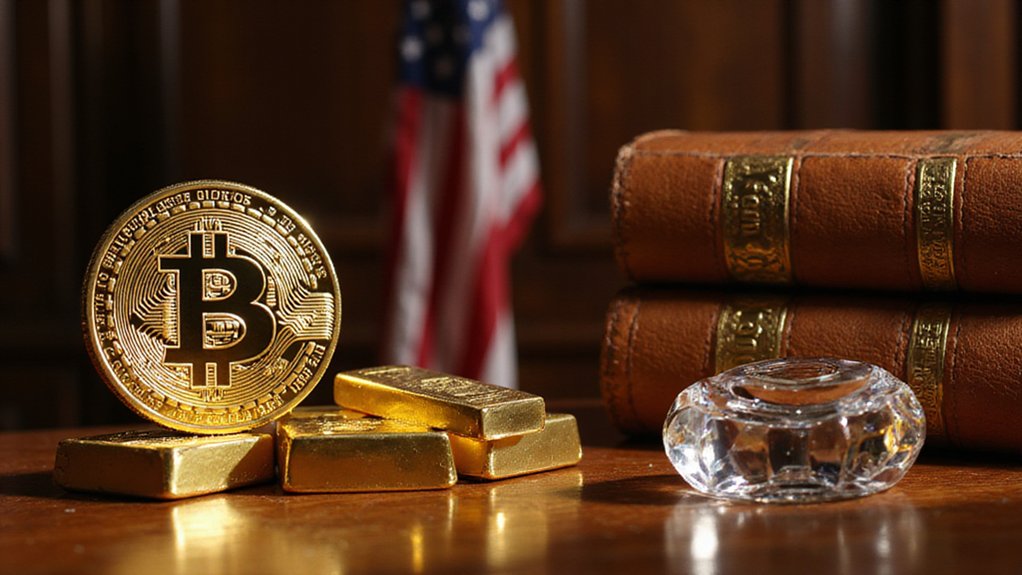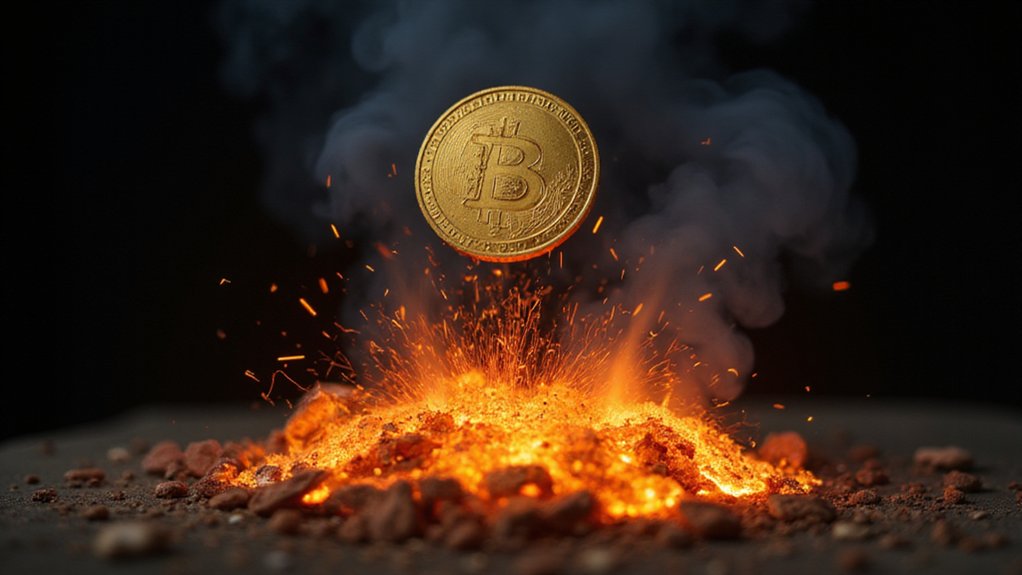Former President Trump’s crypto ambitions have rapidly evolved from skepticism to entrepreneurship, launching both a $TRUMP memecoin on Solana and a family-backed USD1 stablecoin through World Liberty Financial. These ventures coincide conveniently with his administration’s lighter regulatory stance on digital assets and proposed Strategic Bitcoin Reserve. Investors should approach with heightened due diligence, weighing potential conflicts between federal policy and Trump family financial interests—a risk calculus that demands scrutiny beyond mere technical fundamentals.
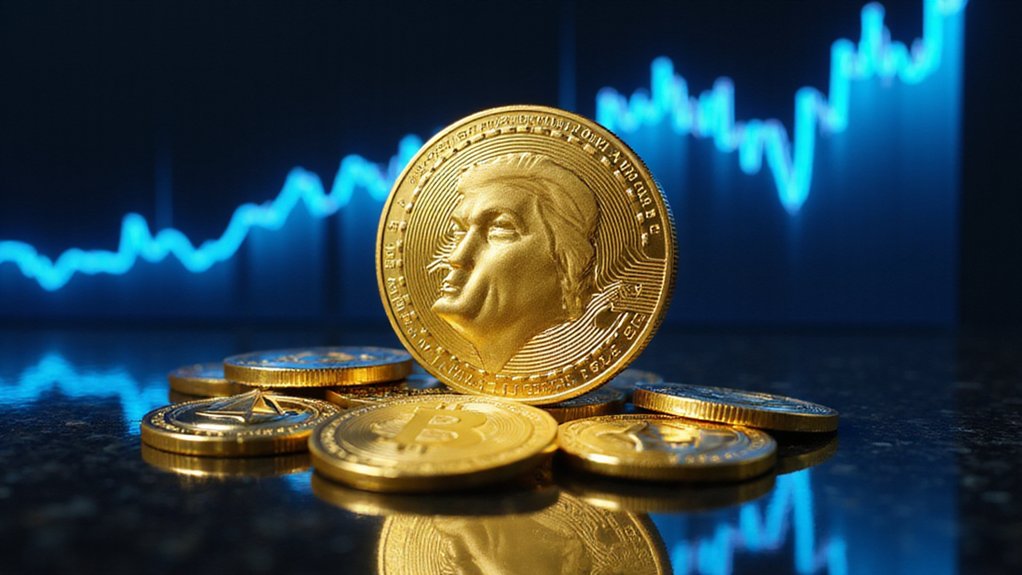
The former president’s foray into the volatile world of digital assets marks yet another unexpected chapter in the Trump family’s entrepreneurial playbook. Donald Trump, once a vocal cryptocurrency skeptic, has executed a remarkable volte-face, embracing digital assets with characteristic bombast through family-launched meme coins and, more notably, the announcement of a Strategic Bitcoin Reserve aimed at cementing American dominance in the crypto sphere.
This pivot coincides with the Trump administration’s increasingly accommodative stance toward cryptocurrency regulation—a curious synchronicity that hasn’t escaped the notice of ethics watchdogs. The administration will establish a reserve that treats bitcoin as a reserve asset, drawing primarily from Treasury-owned bitcoin obtained through forfeiture proceedings. The administration’s advocacy for a “lighter regulatory touch” emerges precisely as Trump family ventures stand to benefit from such policies, raising inevitable questions about potential conflicts of interest that remain largely unaddressed.
Perhaps most remarkable among these initiatives is World Liberty Financial’s USD1 stablecoin, co-founded by the former president’s sons. This digital asset, purportedly backed by short-term U.S. government treasuries and cash equivalents, targets institutional investors and sovereign wealth funds—a considerably more sophisticated audience than typical retail crypto enthusiasts. World Liberty Financial was launched by Donald Trump Jr. and Eric Trump last fall during the presidential campaign. The timing of this launch dovetails with Republican lawmakers’ efforts to establish regulatory frameworks that would legitimize stablecoins alongside traditional banking instruments.
The administration’s proposed Strategic Bitcoin Reserve and U.S. Digital Asset Stockpile represent more ambitious endeavors, ostensibly designed to bolster America’s competitive position in the global crypto ecosystem. Trump has also launched his own memecoin called $TRUMP on the Solana blockchain, highlighting his particular interest in this cryptocurrency platform alongside other major digital assets like Bitcoin and Ethereum. Details regarding funding mechanisms and management structures remain conspicuously sparse, however, leaving investors to speculate about implementation timelines and potential market impacts.
For prospective investors contemplating Trump-adjacent crypto ventures, the convergence of family business interests with prospective regulatory reforms necessitates heightened due diligence. While the administration’s embrace of digital assets could potentially accelerate mainstream adoption, the intertwining of Trump family financial interests with federal policy directions creates an unusually complex risk calculus. Prudent investors might reasonably await greater transparency regarding both the technical fundamentals of these assets and the regulatory frameworks that will govern them.
Frequently Asked Questions
How Does Trump’s Crypto Coin Compare to Other Political Tokens?
Trump’s crypto coin distinguishes itself through its Solana blockchain implementation—contrasting with many Ethereum-based political tokens—and boasts a substantial initial allocation to Trump Organization affiliates.
While political tokens universally face regulatory uncertainty and ethical scrutiny, the $TRUMP token’s market positioning leverages exceptionally strong name recognition and established supporter communities.
Its transaction infrastructure offers practical advantages, though it navigates the same speculative volatility that characterizes the broader memecoin ecosystem where political capital translates unpredictably to market value.
What Regulatory Challenges Might This Crypto Coin Face?
Trump’s crypto coin faces multiple regulatory hurdles in an already ambiguous landscape.
The project must navigate the federal-state regulatory patchwork (particularly in stringent jurisdictions like New York with its BitLicense requirements), while addressing anti-money laundering concerns that inevitably accompany political tokens.
Additionally, the coin’s association with a polarizing political figure may trigger heightened SEC scrutiny regarding securities classification—a familiar battleground where many tokens have faltered.
Privacy considerations further complicate compliance efforts in this regulatory quagmire.
Can International Investors Purchase Trump’s Crypto Coin?
International investors can generally purchase Trump’s cryptocurrency, given its global tradability on blockchain platforms.
However, a patchwork of regulatory hurdles exists—each jurisdiction imposes its own compliance requirements, with some potentially restricting access entirely.
Investors must navigate their local regulatory landscape, considering both explicit prohibitions and implicit complications.
The UAE’s $2 billion investment suggests substantial foreign access, though political considerations may complicate matters in countries with stringent foreign investment controls or cryptocurrency restrictions.
How Will Election Results Impact the Coin’s Value?
Election results—with their pro-crypto regulatory implications—will likely drive significant volatility in the coin’s value.
The “Trump bump” phenomenon already doubled market capitalization, suggesting potential short-term appreciation as regulatory tailwinds materialize.
However, investors should note the gap between campaign promises and implementation often creates a lag effect, potentially triggering corrections if legislative progress stalls.
The coin’s valuation will ultimately hinge on whether the administration’s crypto-friendly policies translate into tangible regulatory frameworks.
What Security Measures Protect Investors From Potential Scams?
Investors in emerging cryptocurrencies benefit from a multi-layered security architecture—though its efficacy remains questionable in this Wild West domain.
Regulatory safeguards include SEC oversight, KYC mandates, and prohibited self-custody rules.
Market integrity measures separate roles between issuers and brokers, while blockchain technology offers transaction auditability.
Nevertheless, these protections operate in a regulatory environment still catching up to innovation, leaving significant gaps that sophisticated scammers routinely exploit with remarkable creativity (and often impunity).
